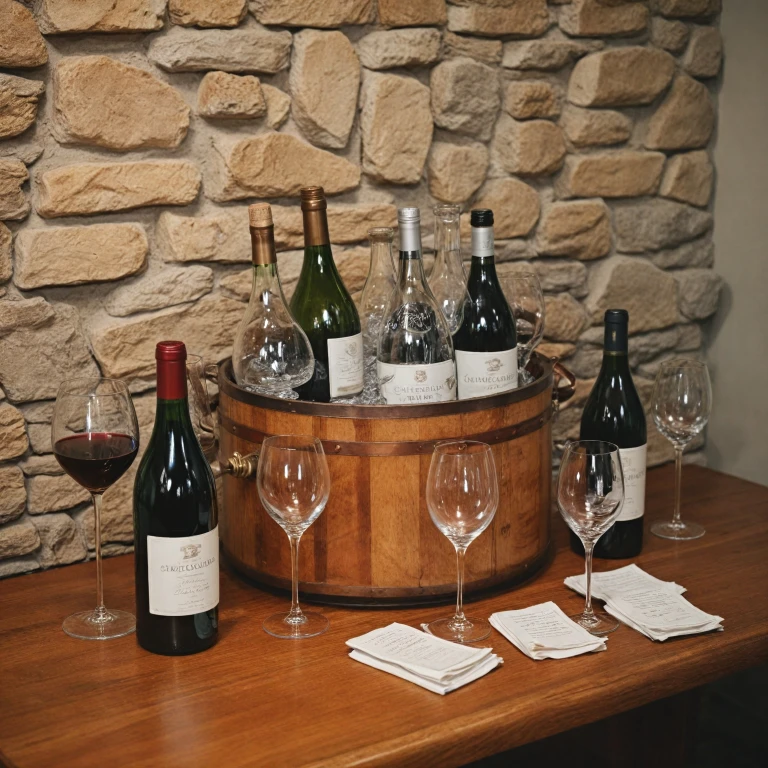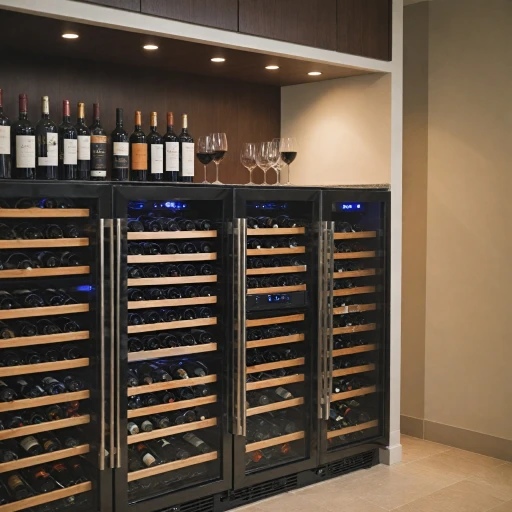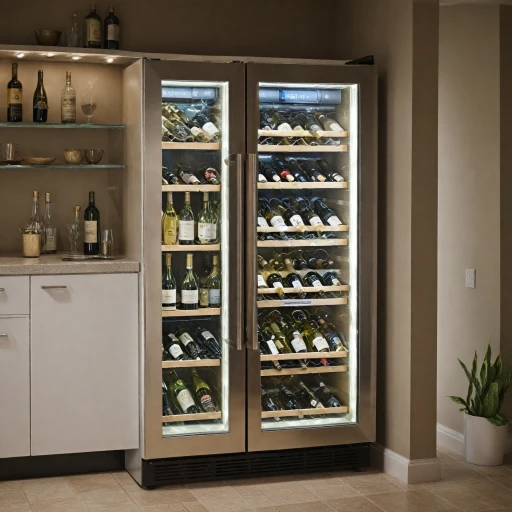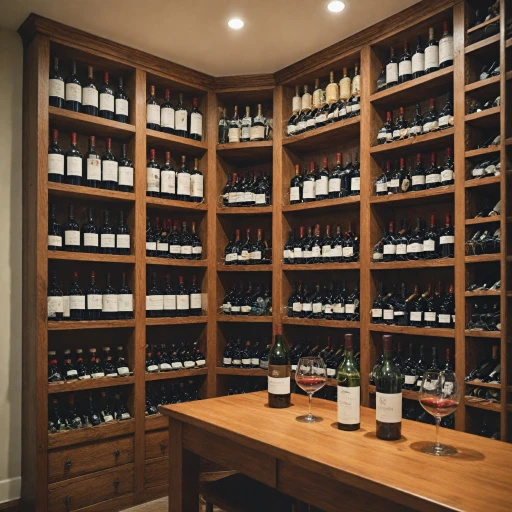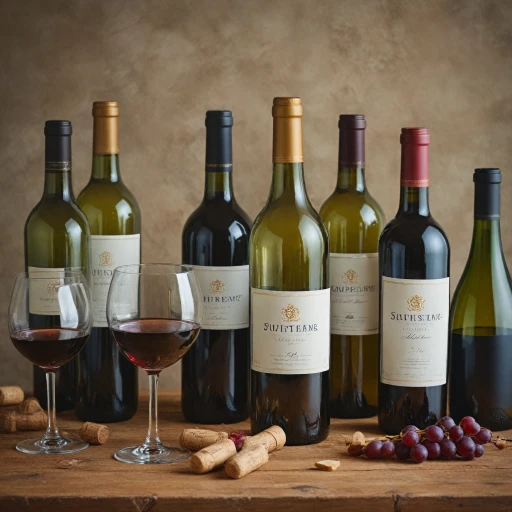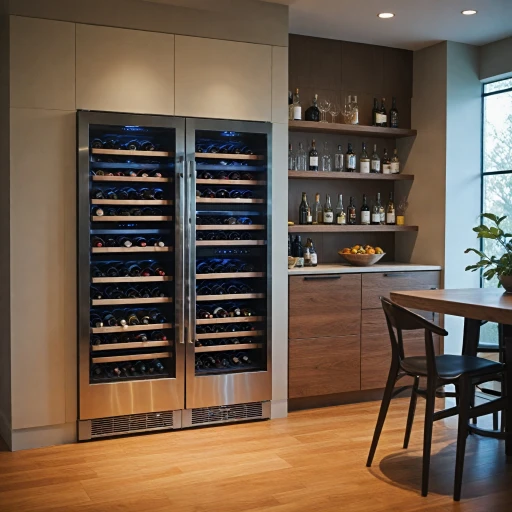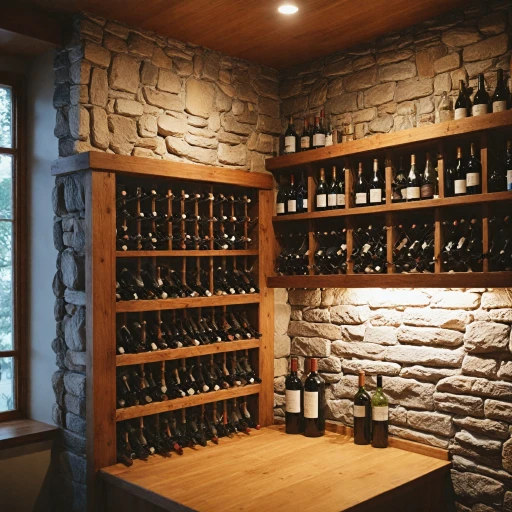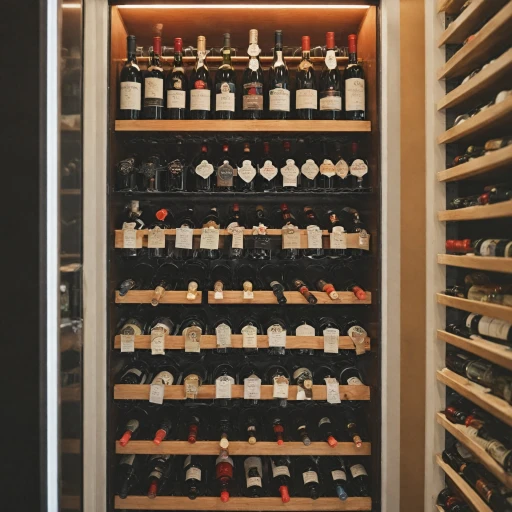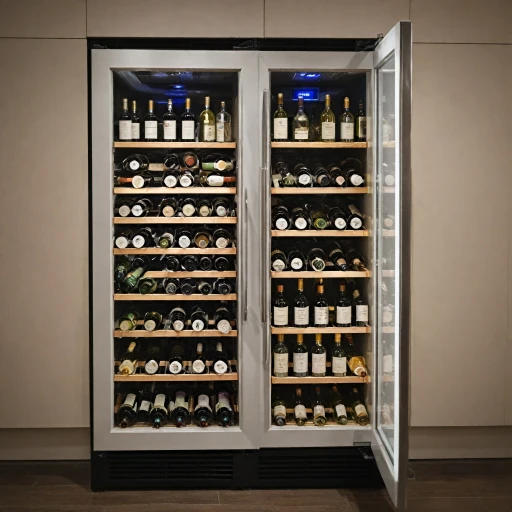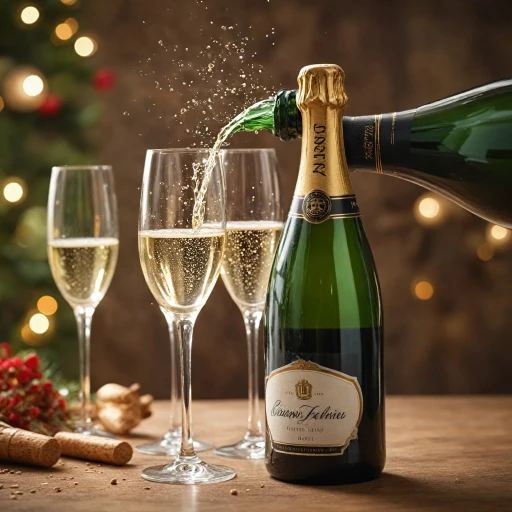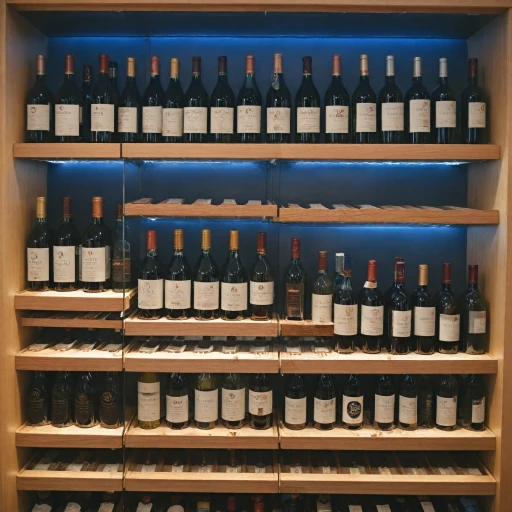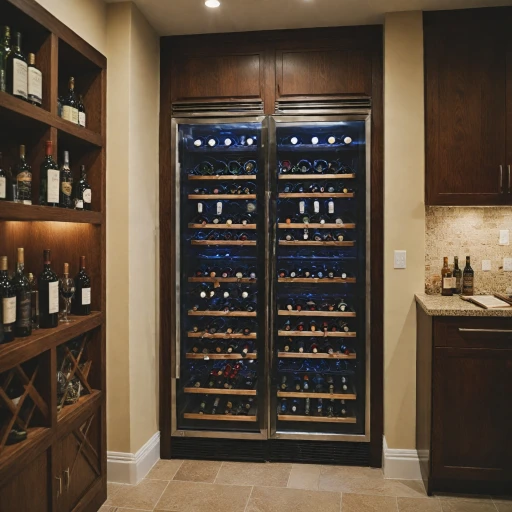
Understanding Wine Chiller Temperature Basics
Setting the Stage for Perfect Temperature Control
When it comes to preserving the exquisite taste and aroma of your wines, the importance of understanding wine cooler temperature basics can't be overstated. Wine aficionados know that a standard fridge is no match for a dedicated wine cooler, designed to maintain the perfect temperature range for delicate beverages.
A single-zone wine cooler will hold all your bottles at a consistent temperature, making it an ideal choice for those who specialize in either red or white wines. On the other hand, dual-zone wine coolers provide the best of both worlds by allowing you to store both red and white wines at their optimal temperatures. Before investing in any wine storage solution, it's crucial to determine which zone wine model best fits your collection needs.
Ideal wine storage requires maintaining a steady cooler temperature to preserve the complexity of flavors. Many wine refrigerators offer customizable temperature settings to ensure your collection ages gracefully. For those looking to embark on creating a personal wine haven, explore the possibilities of crafting your own perfect storage solution with a DIY wine cellar.
Understanding how a wine refrigerator beverage cooler functions, including its storage zone and cooler temperature capabilities, will equip you with the knowledge necessary to enhance your wine-drinking experience and maintain the value of your collection.
Red vs. White: Temperature Differences
Contrasting Temperature Needs of Red and White Wines
Understanding the varied temperature requirements of red and white wines is crucial for optimizing your wine cooler settings. Each type of wine has its ideal temperature range, which significantly enhances its flavor and aroma. White wines are best stored and served at a cooler temperature compared to their red counterparts. Generally, the suitable temperature range for white wines is between 45°F to 50°F (7°C to 10°C). This cooler temperature helps to preserve the wine's crispness and refreshing nature, making it an ideal choice for wines like Chardonnay or Sauvignon Blanc. On the other hand, red wines typically require a warmer setting. The optimal temperature for red wines falls between 55°F to 65°F (12°C to 18°C). This range allows the complex flavors and aromas of red wines, such as those found in a Merlot or Cabernet Sauvignon, to fully develop, providing the best possible tasting experience. To achieve these temperature targets effectively, a dual zone wine cooler is often recommended. A dual zone cooler provides the flexibility to maintain different temperature settings suitable for both your red and white wine collections. In contrast, a single zone wine cooler might only suit one type of wine, making it less versatile for those with diverse collections. When storing your wines, remember that wine fridge temperatures directly influence storage conditions and, subsequently, the taste and longevity of the beverages. It's essential to ensure your wine fridge is set correctly, whether you have a single or dual zone model. For further guidance on setting up your wine cooler and maximizing your fridge wine shelf for optimal storage, you can explore more here. This will provide valuable insights into maintaining your wines in their best state for both short and long-term storage.Sparkling Wines and Their Unique Needs
The Perfect Chill for Sparkling Wines
Sparkling wines demand a special place in your wine cooler due to their unique carbonation and flavor profiles. Since they're often consumed during celebrations, serving them at an ideal temperature ensures they retain their sparkle and taste crisp and refreshing. Just like red and white wines each have their own optimal temperature range, sparkling wines thrive best between 45°F and 50°F (7°C and 10°C). This colder range is vital to maintaining the bubbles and enhancing the overall tasting experience. Using a dedicated beverage cooler or a dual zone wine cooler that allows separate settings can help in achieving these precise temperatures. For those who enjoy storing multiple types of wines, a dual zone refrigerator beverage cooler offers the flexibility needed. You can allocate a specific zone for red wines, which typically require higher fridge temperatures, and another for sparkling varieties, ensuring each wine type is stored perfectly. One might consider investing in a freestanding wine cooler or wine fridge that allows for both single and dual zone storage, which is particularly beneficial for long term wine storage. This way, you are not only accommodating your sparkling wines but also ensuring your reds and whites are kept at their best. Choosing the right wine refrigerator beverage setup will depend on your collection's needs and your consumption habits. More insights on enhancing your wine storage with the appropriate wine cooler can be found here.The Impact of Temperature on Wine Flavor
The Influence of Temperature on Wine's Character
The desire to enjoy a bottle at its finest highlights the critical role of temperature in wine storage. Not mere numbers on a dial, the temperatures set within wine coolers and storage zones significantly impact the flavors and aromas that emerge from your reds, whites, and sparkling wines. Here's how temperature interacts with your wine's character:- Floral and Fruity Notes: Wines stored at temperatures that are too high can lose their nuanced floral and fruity notes, resulting in a flattened taste. Optimal temperature control allows these flavors to develop and shine, whether in a wine fridge or a freestanding beverage cooler.
- Tannins and Acidity: Red wines, often stored in single zone wine fridges, benefit from room temperature to enhance their tannins and acidity. The right temperature range ensures a velvety texture without an overpowering bite.
- Alcohol Level Perception: The perception of alcohol is linked to wine cooler temperature settings. Warmer conditions can make wines taste more alcoholic, while cooler settings bring forward subtle flavors and complexities.
- Evolving Aromas: Wine storage at the correct fridge temperature allows aromas to evolve naturally, offering a bouquet that engages, rather than overwhelms. Dual zone coolers can be essential for managing the aromatic development in both red and white wines.
Common Mistakes in Wine Chiller Settings
Avoiding Common Pitfalls in Setting Your Wine Cooler Temperature
When it comes to setting the temperature on your wine cooler, a few common mistakes can hinder the enjoyment of your prized bottles. Recognizing these missteps ensures your wines, whether red or white, are perfectly preserved.
- Setting a One-Size-Fits-All Temperature: One of the main pitfalls is assuming all wines benefit from the same temperature. Red wines and white wines have different storage needs, with each demanding specific conditions to maintain their structure and flavor. A wine cooler or wine fridge with a dual zone feature allows for separate temperature settings, accommodating both categories effectively.
- Neglecting Seasonal Adjustments: The temperature outside can impact the internal temperature of your wine fridge. Don’t forget to make minor adjustments according to the season to keep the cooler temperature stable.
- Ignoring the Specifics of Sparkling Wines: Sparkling wines often have unique storage requirements. It's essential to understand these needs to avoid any off-flavors that improper storage could cause.
- Improper Temperature Range for Long-Term Storage: If you intend to age your wines, especially red wines, maintaining a slightly higher, constant fridge temperature will help develop the wines slowly over time without spoiling them.
- Lack of Temperature Monitoring: Regularly checking the cooler’s performance and making adjustments as needed prevents fluctuating conditions which can negatively affect wine quality.
In essence, understanding wine storage goes beyond setting a temperature range. It involves recognizing the different needs of your collection and adjusting your wine cooler’s settings accordingly. Whether you're using a freestanding or built-in wine cooler, ensuring the appropriate temperature will guarantee the best enjoyment from your wine collection.
Choosing the Right Wine Chiller for Your Collection
Matching Your Collection Needs with the Perfect Wine Chiller
When selecting a wine chiller, understanding the right match for your collection is crucial. The options vary significantly depending on the types of wine you store and your consumption habits. Here's a helpful guide to ensure you choose the best fit.
First, consider the temperature range you need for your collection. Red wines generally benefit from being stored at warmer temperatures compared to white wines. A dual zone wine cooler allows you to store both types of wine at their optimal temperatures simultaneously. This setup is ideal if you have a diverse collection consisting of both red and white wines. Conversely, a single zone fridge might suffice for a uniform collection, such as primarily red or white wine.
If your collection includes sparkling wines, which have their own unique temperature requirements, it's essential to ensure your cooler can accommodate them appropriately. As discussed in previous sections, balancing the refrigerator beverage temperature can significantly impact the flavor profile of sparkling wines.
Your storage capacity needs are also a critical factor. Consider a freestanding model for larger collections or if you plan to expand your collection over time. For those with limited space, a compact beverage cooler might suffice, especially if you're focusing on long term storage for a select few bottles.
In addition, think about where the cooler will be placed. A freestanding beverage cooler requires ample ventilation on all sides, while built-in models can be seamlessly integrated into cabinetry. This influences not only your space but also the cooler's efficiency in maintaining the set fridge temperature.
Finally, always consider the technological features and controls at your disposal. Advanced models offer precise temperature control and even smart connectivity for remote adjustments, ensuring your collection is perfectly preserved.
